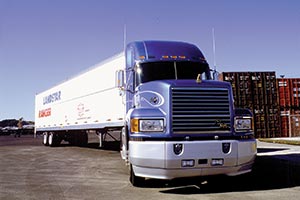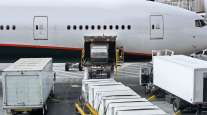Truckload Profits Beat Estimates From Analysts in Quarter

This story appears in the Feb. 6 print edition of Transport Topics.
Truckload companies posted quarterly results that outperformed the negative predictions from industry analysts, although profits were lower for some.
Landstar System Inc. was the standout, earning $39.6 million, or 94 cents per share, up 4.5% from $37.9 million, or 88 cents, in the same period the year before. Revenue increased 5.2% to $892.8 million.
However, Werner Enterprises Inc. recorded a 40% drop in profits to $21.8 million, or 30 cents, versus $36.6 million, or 51 cents, the year prior. Revenue dropped 2% to $518.8 million.
And Celadon Group Inc.’s fiscal second-quarter earnings plummeted 81% to $1.3 million, or 5 cents, from $6.6 million, or 24 cents. Revenue declined 3.5% to $265.7 million.
The Indianapolis motor carrier blamed much of its decline on the weak used- and new-truck sales market. Costs related to equipment rentals increased nearly $7 million because of a trailer sale leaseback transaction completed in June, the company said. Analysts predicted Celadon would have $1.4 million in net losses, according to Bloomberg News.
While Landstar CEO Jim Gattoni told investors that he was “very pleased” with the fourth-quarter outcome, Celadon called its results disappointing. Werner emphasized that conditions slowly improved on a sequential basis.
“In fourth-quarter 2016, transactional spot rates demonstrated material improvement, and contract rates began to stabilize for new contracts. Expectations are rising for improved pricing in 2017,” according to a Werner statement.
Werner’s trucking revenue dropped 6% to $347.5 million, but logistics rose 11% to $107.2 million. Revenue per tractor per week increased 3.8% sequentially due to higher revenue per total mile. On a year-over-year basis, revenue per tractor per week fell 1.9%. The Omaha, Nebraska, carrier ranks No. 15 on the Transport Topics Top 100 list of the largest U.S. and Canadian for-hire carriers.
Landstar’s revenue on freight hauled by third-party drivers, called business capacity owners, increased 5.1% to $402.1 million in the quarter. Truck transportation revenue, which includes freight hauled in dry vans, refrigerated vans and less-than-truckload trailers, was $832.2 million compared with $786.4 million in the year prior. Revenue from freight brokering to rail, air and ocean cargo carriers was $48.7 million, down from $50.6 million in 2015. Total loads rose 10% in the quarter.
“In 2016, Christmas Day fell on a Sunday, whereas in 2015, it fell on a Friday, making the week prior to Christmas in 2016 more productive than the comparable week of 2015. We estimate that the extra week, plus the increased productivity due to the timing of Christmas, added approximately 30,000 loads,” Gattoni said.
Celadon, No. 32 on the for-hire TT100, suffered from lower volumes on a year-over-year basis. Revenue per loaded mile and per tractor per week were relatively unchanged in the fourth quarter compared with 2015, but total miles driven and the number of trucks on the road were lower on a year-over-year basis due to weak freight demand.
“We anticipate the March quarter to be down approximately 200 additional trucks from December quarter’s average with further decisions about fleet size to be made as the year develops,” the company said.
Landstar and Celadon came out 6 cents ahead of the Bloomberg News consensus forecast, and Werner ended up 4 cents ahead.




